Want branded cups but worried about the process? A wrong move can hurt your brand. Here's how to get it right and build trust with every sip.
For successful custom branding, focus on the cup's foundation. This means using high-quality, food-grade stainless steel like 304. It ensures the cup is safe for hot drinks, is BPA-free, and provides a durable base for your logo. This quality guarantees a product your customers will love.
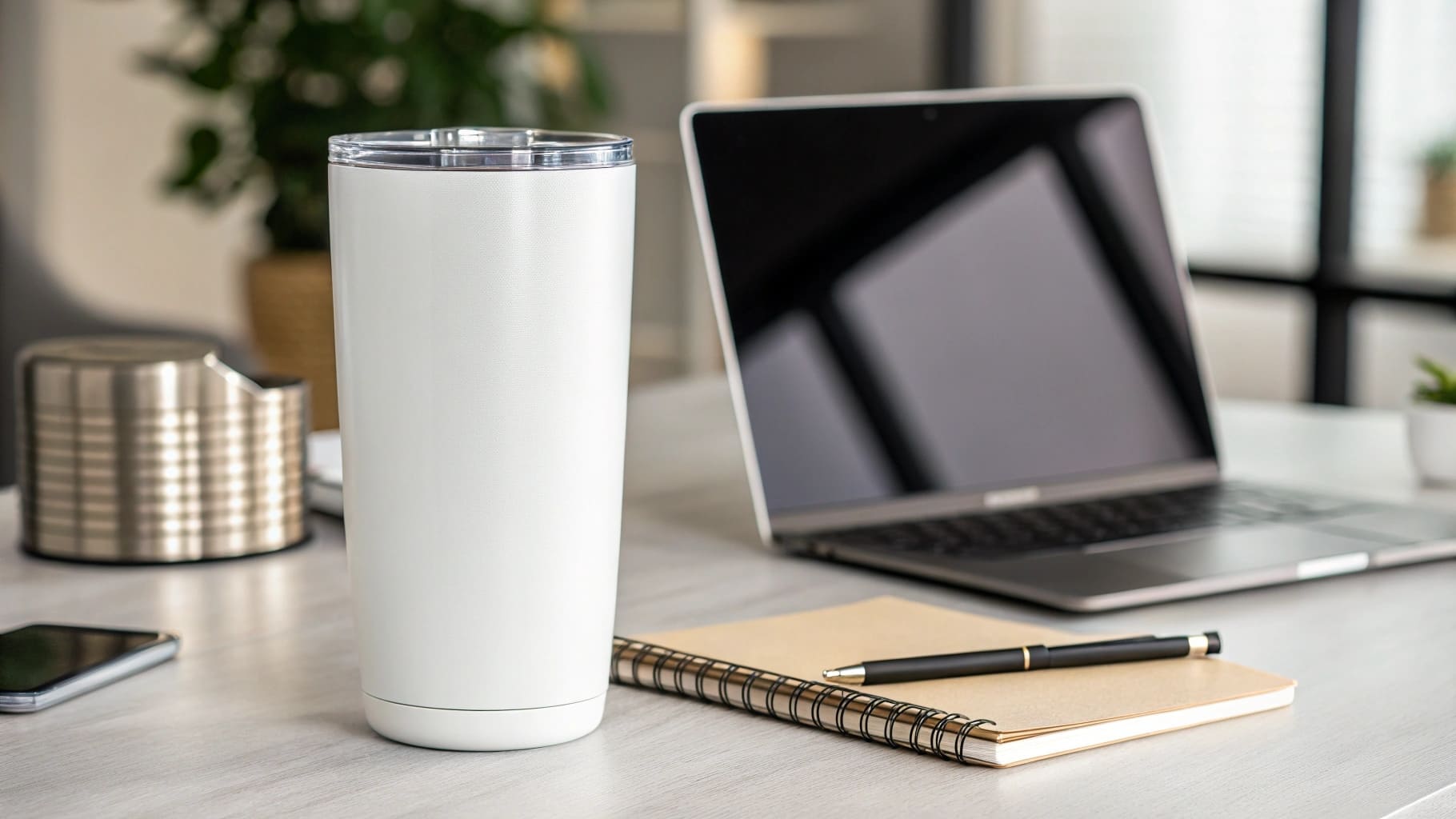
The quality of the cup itself is just as important as the logo you put on it. I have seen many businesses focus only on the design, and it can lead to problems. So, before we talk about putting your logo on a cup, we should explore the cup itself. Let's start with the most popular branding method.
How to Laser Engrave a Stainless Steel Cup?
Want a permanent, premium logo on your cups? Laser engraving seems perfect, but mistakes are permanent too. Let's make sure your design looks flawless and professional.
Laser engraving uses a focused beam of light to etch a design directly onto the steel surface. The process removes the cup's outer powder coating to reveal the raw stainless steel underneath. This creates a durable, high-contrast mark that will not peel or fade over time.
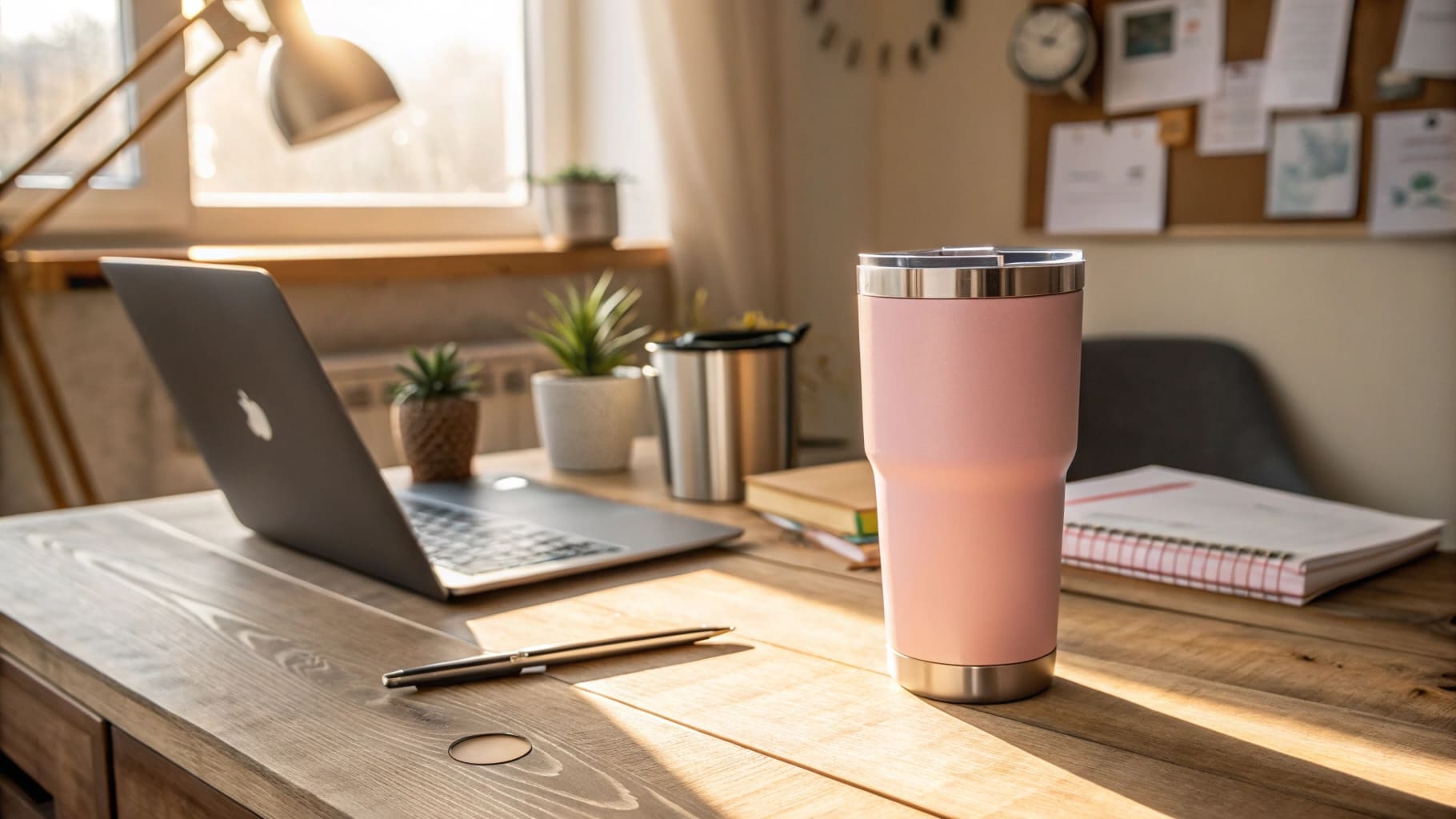
Laser engraving is a fantastic way to create a premium, lasting impression. I work with clients like Mark from Canada, who rebrands our bottles for his market. He knows that a crisp, clean logo is non-negotiable. The key to a great result is in the details of the process.
The Technology Behind the Mark
We use a fiber laser for this job. It is precise and powerful. The laser beam vaporizes the powder coating1 on the cup, exposing the shiny metal underneath. This contrast between the cup's color and the silver steel is what makes the logo pop. The quality of the powder coating is very important here. A thick, evenly applied coat results in a sharper and cleaner engraving.
Preparing Your Design
The most common issue we see is incorrect file formats. A few years ago, a new client sent us a logo as a low-resolution JPG file. If we had used that, the engraving would have looked blurry and pixelated. We explained that for engraving, we need a vector file. Vector files, like Adobe Illustrator (.AI) or .EPS files, are made of lines and curves instead of pixels. This means we can scale your logo to any size without losing quality. We helped him convert his file, and the final product was perfect. This little step saved his entire project.
| File Type | Best For | Why? |
|---|---|---|
| Vector (.AI, .EPS, .SVG) | Laser Engraving | Scalable to any size with no loss of quality. Creates sharp lines. |
| Raster (.JPG, .PNG) | On-screen viewing | Made of pixels. Becomes blurry and jagged when enlarged. |
Can You Use Stainless Steel Cups for Hot Drinks?
You want to offer cups for coffee lovers. But you worry if stainless steel is safe for hot liquids. Let's clear up any doubts and ensure your customers' safety.
Yes, you absolutely can. High-quality, double-walled stainless steel cups2 are excellent for hot drinks. The double-wall construction provides insulation, keeping the beverage hot while the exterior of the cup remains cool to the touch. It is a safe and very popular choice.
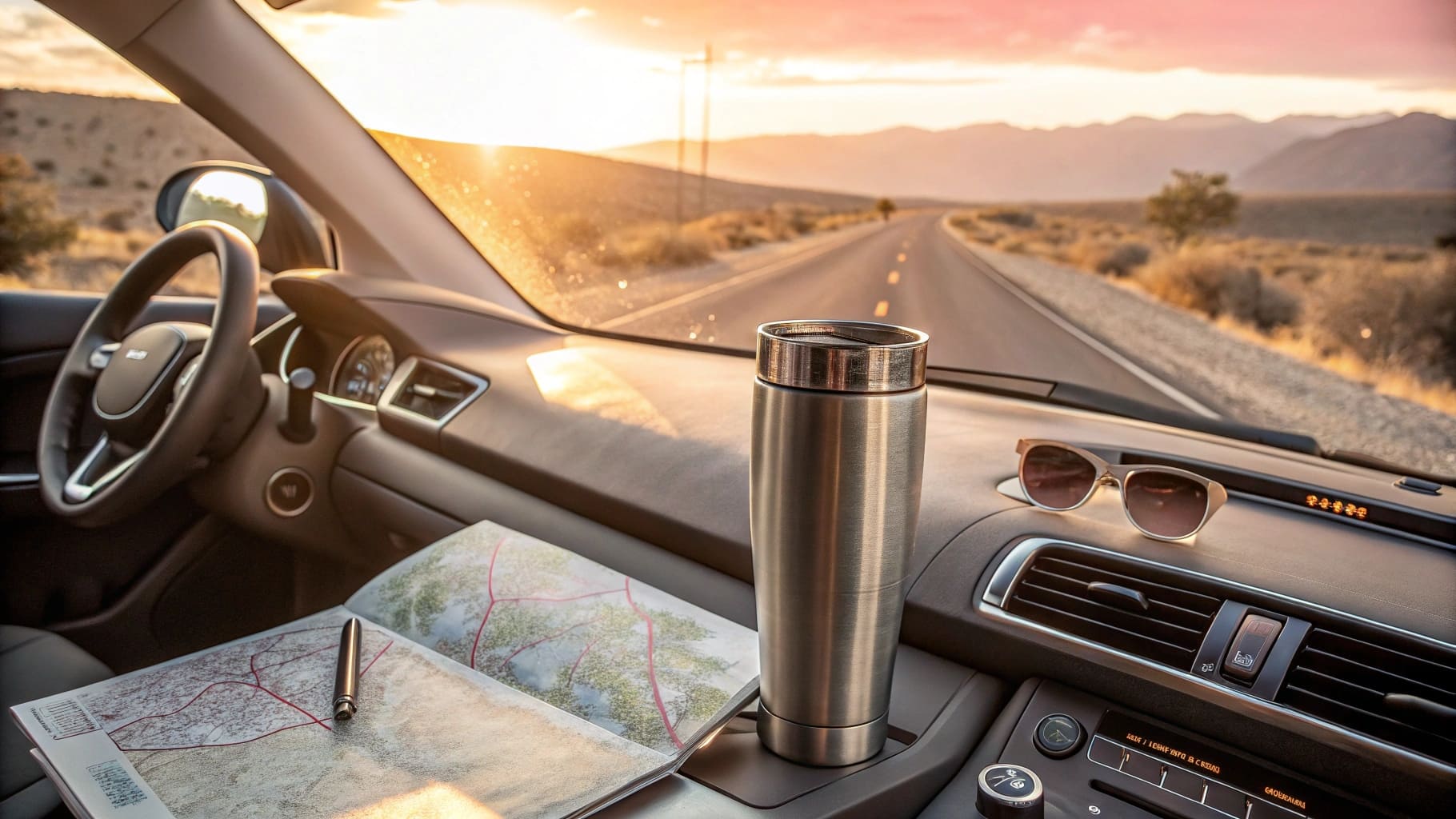
This question comes up all the time, and it is a very important one. The answer depends entirely on the construction of the cup. Your choice between a single-wall and a double-wall cup will completely change the user's experience.
Single-Wall vs. Double-Wall
A single-wall stainless steel cup is just one layer of steel. If you pour hot coffee into it, the outside of the cup will become very hot, almost instantly. It is not safe to hold without a protective sleeve. These cups are lighter and cheaper, but they are not suitable for hot beverages.
A double-wall vacuum insulated cup is different. It has an inner wall and an outer wall with a vacuum in between. This vacuum layer stops heat transfer. So, the coffee inside stays hot for hours, but the outside of the cup stays at room temperature. You can hold it comfortably. I once had a client who wanted to order single-wall cups for a coffee shop promotion to save on costs. I strongly advised him against it. I explained that customers would complain or even burn their hands. We sent him a sample of each, and he immediately understood. He switched his order to double-wall cups, and his promotion was a huge success. He told me later that my advice saved his brand's reputation.
The Importance of the Lid
Also, think about the lid. A good lid helps with insulation and prevents spills. Look for lids made from durable, BPA-free plastic with a secure silicone seal. A splash-proof lid is essential for anyone drinking hot coffee on the go.
Can I Put Coffee in a Metal Cup?
Your customers are coffee purists. They might worry about a metallic taste. This concern can make or break a sale. Here is how to assure them of a pure coffee experience.
Yes, coffee is perfectly safe in a quality stainless steel cup. Food-grade stainless steel, like type 304, is non-reactive. This means it will not leach chemicals or add a metallic taste to your coffee. Just be sure the cup is clean before the first use.
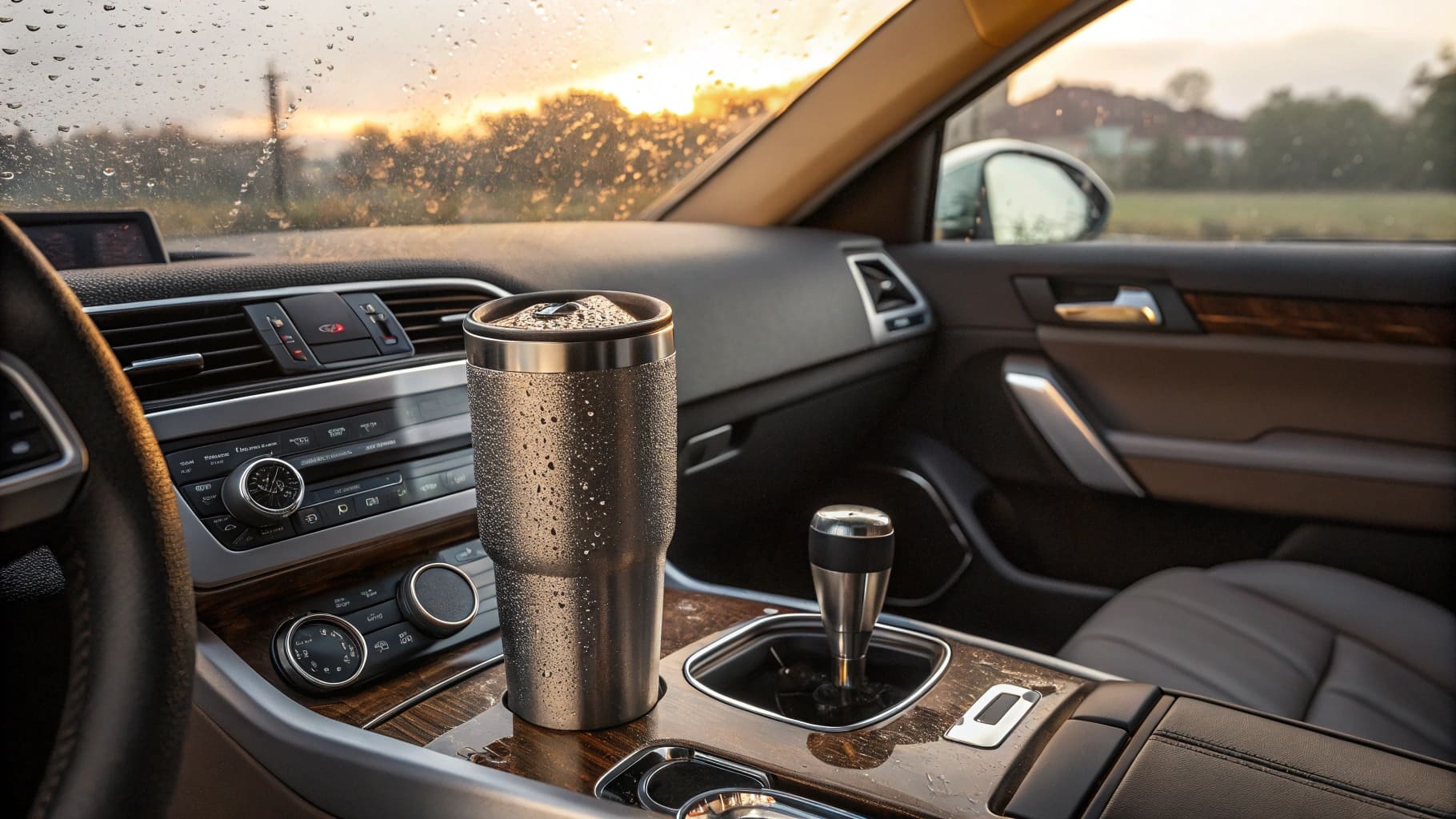
The fear of a "metal taste" is something we in the industry have to address often. For a business owner like Mark, who sells to discerning customers, this is a valid concern. The good news is that with quality materials, this is not an issue.
Why 18/8 Stainless Steel is the Standard
The best stainless steel for food and drinks is Type 304, also known as 18/8 stainless steel. This name comes from its composition: 18% chromium and 8% nickel. This specific alloy makes the steel highly resistant to rust and corrosion. Most importantly, it is non-reactive. This means it doesn't react chemically with acidic drinks like coffee. The metal doesn't leach into the drink, so the coffee's flavor remains pure and unchanged.
What Causes a Metallic Taste?
So where does the myth come from? A metallic taste can happen for two reasons:
- Low-Quality Steel: Cheaper, lower-grade steel might not be as stable and could interact with drinks. This is why choosing a supplier who guarantees 18/8 food-grade steel is critical.
- Manufacturing Residue: A brand-new cup can sometimes have residue from the manufacturing process. This is easily solved. I always tell my clients to advise their customers to wash a new cup thoroughly with warm, soapy water before its first use. This simple step removes any residue and ensures the purest taste.
| Material | Reactivity with Coffee (Acidic) | Taste Impact |
|---|---|---|
| 18/8 Stainless Steel | Non-reactive | None |
| Aluminum (uncoated) | Reactive | Can leach into the drink, affecting taste and safety. |
| Plastic | Can be reactive | Can leach chemicals (like BPA) and hold onto old flavors. |
Is It Good to Drink Tea in a Steel Cup?
Tea drinkers can be particular about their cups. Will a steel cup ruin the delicate flavors of their tea? This question needs a solid answer for your brand's credibility.
Yes, it is very good to drink tea in a steel cup, especially an insulated one. The steel is non-reactive, so it preserves the tea's original flavor profile. Plus, the insulation maintains the perfect brewing temperature for longer, enhancing the overall experience.

Tea is all about delicate flavors and specific brewing temperatures. I worked with a European company that sells high-end organic teas. They were very skeptical about using stainless steel tumblers for a gift set. They worried it would taint the taste of their prized Silver Needle white tea. Their reputation depended on delivering a perfect tea experience.
Preserving Flavor and Temperature
I explained that, just like with coffee, 18/8 stainless steel does not interfere with flavor. It is a neutral material. Unlike porous materials like ceramic or plastic, it does not absorb old flavors. So, if you clean your cup properly, your green tea will not taste like the black tea you drank yesterday.
The bigger advantage for tea lovers is temperature control. Different teas brew best at different temperatures. For example:
- Green Tea: Best brewed at around 80°C (175°F).
- Black Tea: Best brewed near boiling, at 95°C (203°F).
A double-wall vacuum insulated stainless steel cup is brilliant at maintaining these temperatures. It keeps the water at the ideal heat for much longer than a ceramic mug. This allows for a better, more complete infusion. We sent samples to the tea company, and they tested them extensively. They were amazed. The insulation not only kept the tea hot but also seemed to bring out more flavor because the temperature was so stable. They became a long-term partner.
Do Stainless Steel Cups Have BPA?
Health-conscious customers are everywhere. The word 'BPA' can scare them away. You need to confidently state that your products are safe. Let's make sure you can.
No, high-quality stainless steel cups do not contain BPA. BPA (Bisphenol-A) is an industrial chemical used to make certain plastics and resins. Stainless steel is a metal alloy and is naturally BPA-free. This is one of its main advantages over many plastic alternatives.
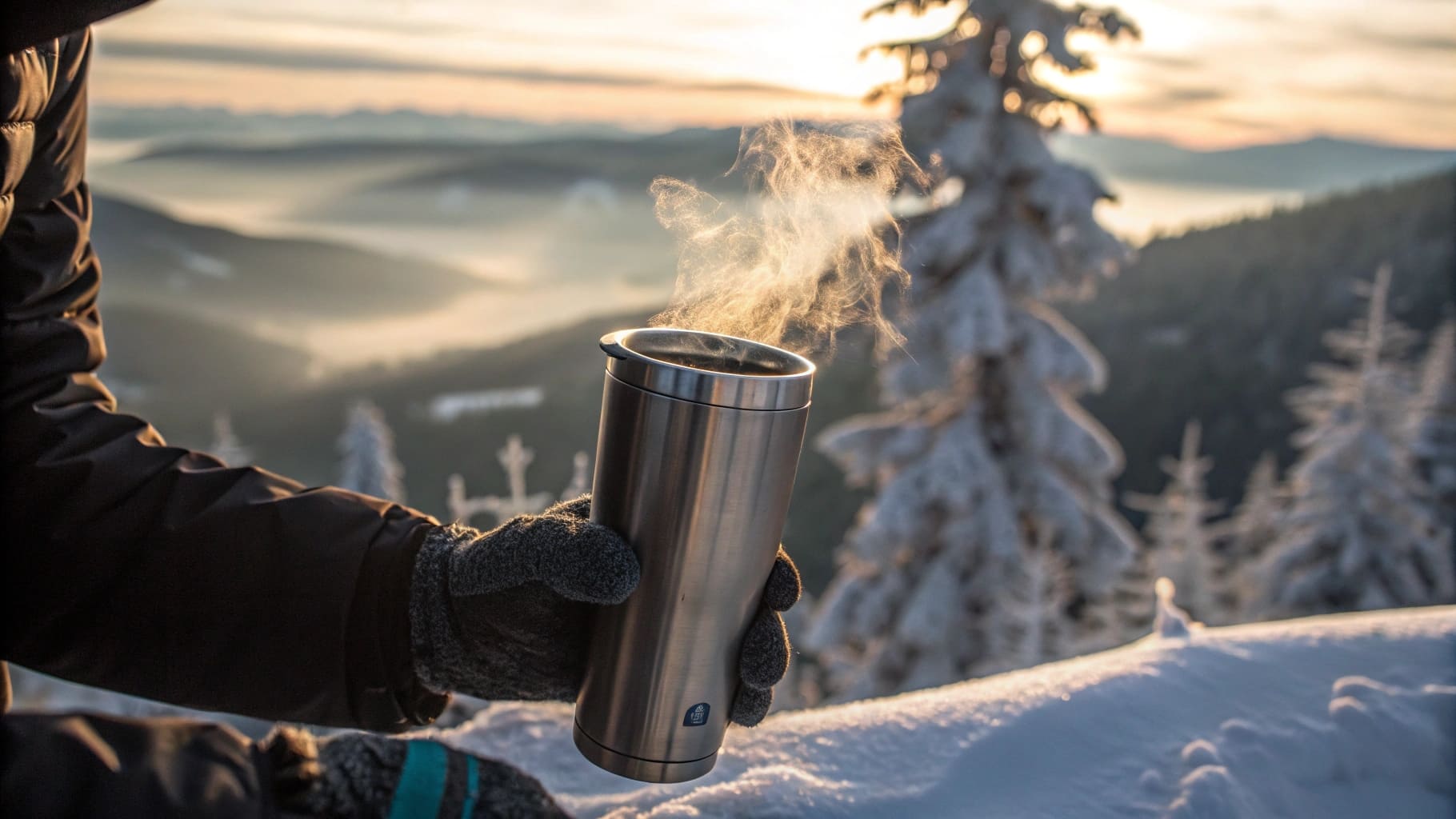
This is probably the easiest and most powerful claim you can make about your stainless steel drinkware. For any business owner selling to markets in America or Europe, "BPA-Free" is a golden phrase. But it is important to understand the full picture to communicate this benefit with confidence.
What is BPA and Why is it a Concern?
BPA is a chemical used for decades in the production of polycarbonate plastics and epoxy resins. These plastics were often used for food containers, baby bottles, and water bottles. Health studies later raised concerns that BPA could seep into food or beverages, potentially causing health problems. This led to a huge consumer demand for BPA-free products.
Stainless Steel: The Naturally Safe Choice
Stainless steel is an alloy of iron, chromium, nickel, and other elements. It is metal. It is not plastic. The manufacturing process does not involve BPA or any other similar plasticizing chemicals. Therefore, the body of the cup is 100% BPA-free by its very nature. This is a simple fact.
A Note on Lids and Certification
However, you must also pay attention to the lid. Most lids are made from plastic. As a responsible business owner, you must ensure that the plastic used for the lid is also BPA-free. At Icobottle, we use BPA-free plastics like PP (Polypropylene) or Tritan for all our lids.
This is where dealing with a trustworthy supplier becomes critical. I have heard stories of suppliers providing fake certificates. This is a huge risk for any importer. We provide our partners with legitimate, verifiable test reports from third-party labs like SGS. These reports confirm that our products, including the lids, are FDA and LFGB compliant and free of BPA, lead, and other harmful substances. This documentation protects your business and builds ultimate trust with your end customers.
Conclusion
In short, successful custom branding starts with a quality, safe cup. Focus on the steel, insulation, and safety certifications. This ensures your brand is one customers trust.

